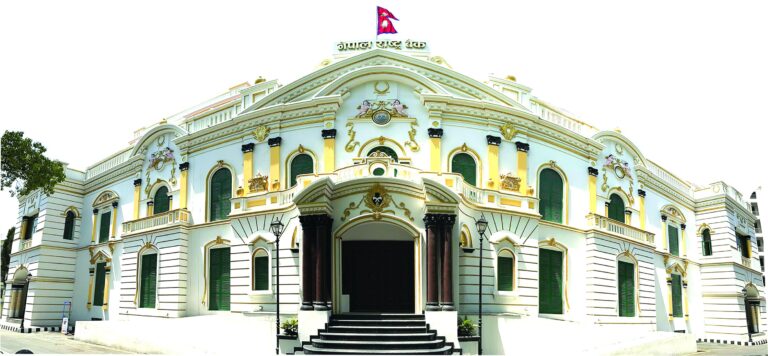The Nepal Rastra Bank released its latest macroeconomic and financial report covering the first three months of FY 2024/25. The report highlights the country’s economic performance, including inflation trends, external trade, remittances, government finances, and the monetary and capital markets.
Key Highlights:
1. Inflation Declines Significantly
- Year-on-year (y-o-y) consumer price inflation eased to 4.82% in mid-October 2024, down from 7.50% a year ago.
- Food and beverage prices surged by 7.18%, with vegetables seeing the highest rise (25.15%), while meat and fish prices dropped by 1.18%.
- Non-food and service inflation slowed to 3.49%.
2. Trade Performance and External Sector
- Merchandise exports declined by 6.1% to NPR 38.38 billion, while imports fell by 4.2% to NPR 390.75 billion.
- Trade deficit decreased by 4% to NPR 352.37 billion, with the export-import ratio narrowing to 9.8%.
- Remittances increased by 11.5%, reaching NPR 407.31 billion (USD 3.04 billion).
- Foreign exchange reserves rose by 9.4% to NPR 2,232.28 billion, sufficient to cover 17.6 months of imports.
3. Fiscal Position
- Government expenditure during the period stood at NPR 329.20 billion, including recurrent (NPR 229.85 billion), capital (NPR 29.37 billion), and financial expenditures (NPR 69.97 billion).
- Revenue collection reached NPR 248.26 billion, marking a 13.3% y-o-y growth.
- Provincial governments mobilized NPR 37.95 billion in resources, while their expenditure totaled NPR 20.92 billion.
4. Monetary Developments
- Broad money supply (M2) grew by 3.4% in the review period and 13.3% y-o-y.
- Domestic credit expanded by 1.7%, while deposits at banks and financial institutions (BFIs) grew by 2.6%.
- Private sector credit saw a 2.5% increase, driven by growth in loans to service and industrial sectors.
5. Capital Market
- NEPSE Index surged to 2,742.89, up from 1,864.62 a year earlier, reflecting robust stock market performance.
- Market capitalization reached NPR 4,361.45 billion, with financial and hydropower companies dominating.
- Securities worth NPR 5.15 billion were listed, including bonus shares, right shares, and mutual funds.
6. Balance of Payments (BOP)
- BOP surplus widened to NPR 184.99 billion (USD 1.38 billion), compared to NPR 101.66 billion last year.
- The current account surplus reached NPR 111.87 billion, supported by higher remittances and improved trade balance.
7. Sectoral Insights
- Wholesale price inflation increased to 5.51%, with notable rises in consumption and intermediate goods.
- Travel income rose by 3.5%, while travel expenses increased by 7.7%, mainly driven by education-related expenditures abroad.
- Gold prices surged by 38.7%, while crude oil prices declined by 20.4% in the international market.
The report paints a picture of mixed economic performance, with improvements in inflation, remittances, and foreign exchange reserves offset by declining trade volumes and challenges in capital expenditure. The stock market exhibited strong growth, indicating investor confidence, while monetary indicators signaled moderate credit growth.



 About Us
About Us
Comment